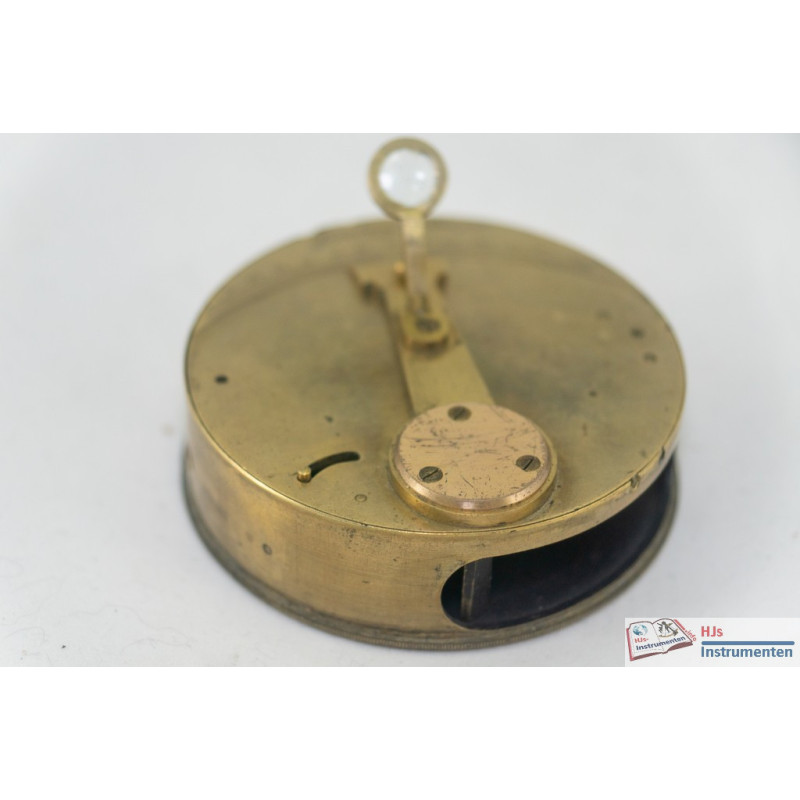









Banks, London box sextant
This box sextant is most probably the oldest in my collection. It is unceratain how old it really is as there is not a lot of information known about its maker 'Banks'. Presumably this is Robert Banks of London who was in business from 1795 until 1830. In 1820 the company became Bank & Sons (or Banck & Sons). The box sextant is first described by George Adams in 1797. Considering that his instrument does not have silvered scales, drum or tangent screw it could be an early instrument indeed.
Unfortunately there is no further information engraved on the instrument other than a makers name. As Banks 'moved' places (streets were renumbered) and labeled instruments also with 'maker to' and then one of the royalties of his days, this could have provided a closer date than early 19th century which is now most probable.
The instrument not only deviates in how it is made to change angles, also the fine reading microscope is on a much shorter stem than on later instruments. The filters are operated using a slide on the top (large filter) or using a small slide next to the peep hole for a filter that is in front of the peephole. The instrument is graded in whole degrees with the vernier in single minutes rather than later sextants which had a main scale in half degrees with a vernier in single minutes.
Data sheet
You might also like